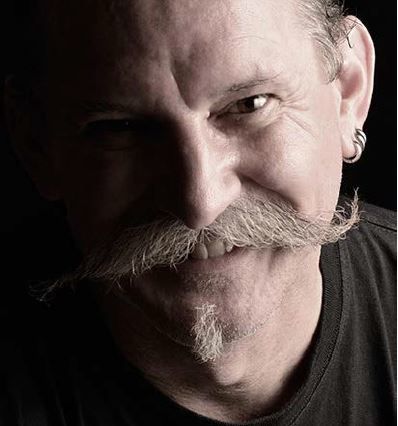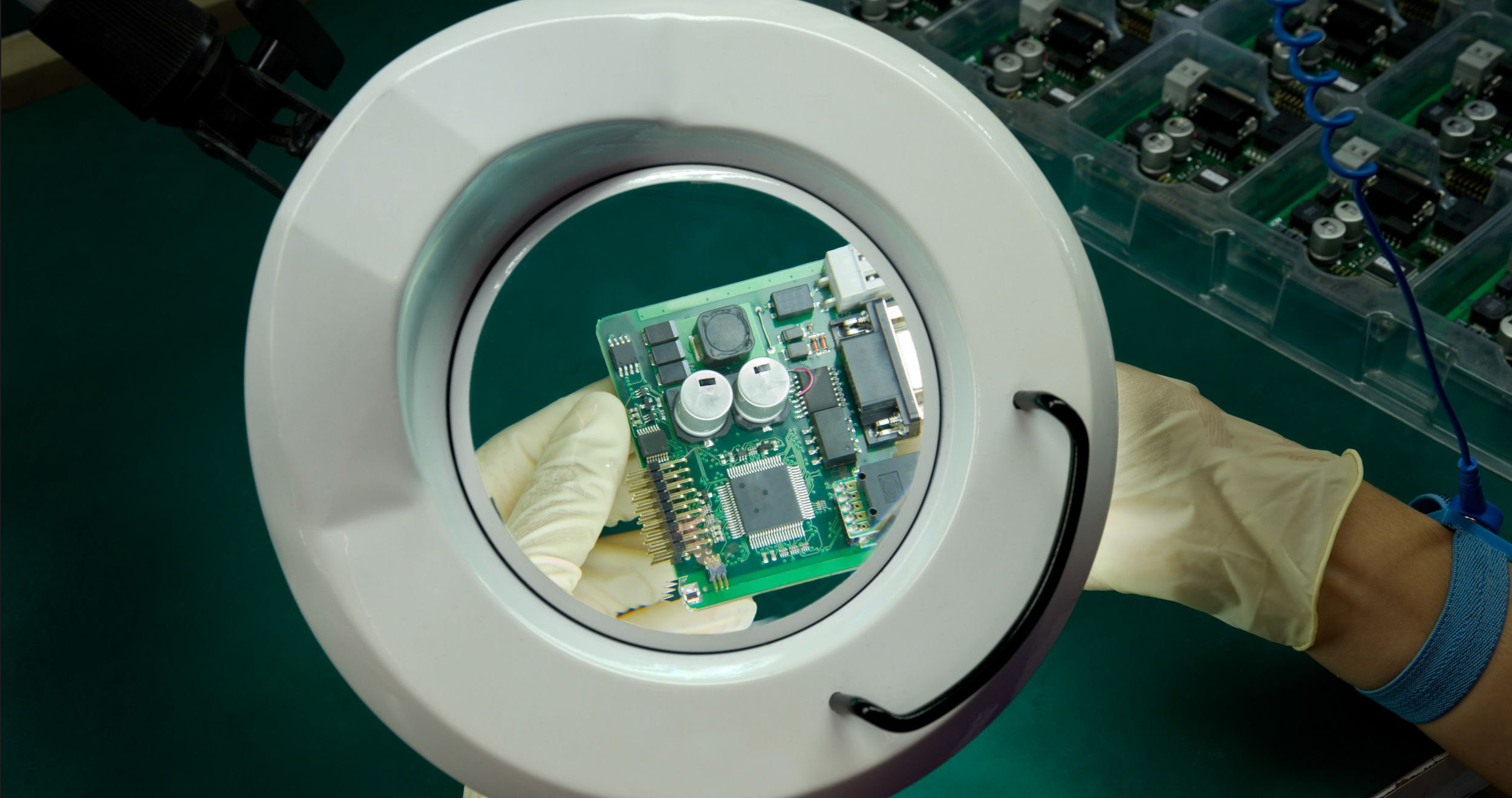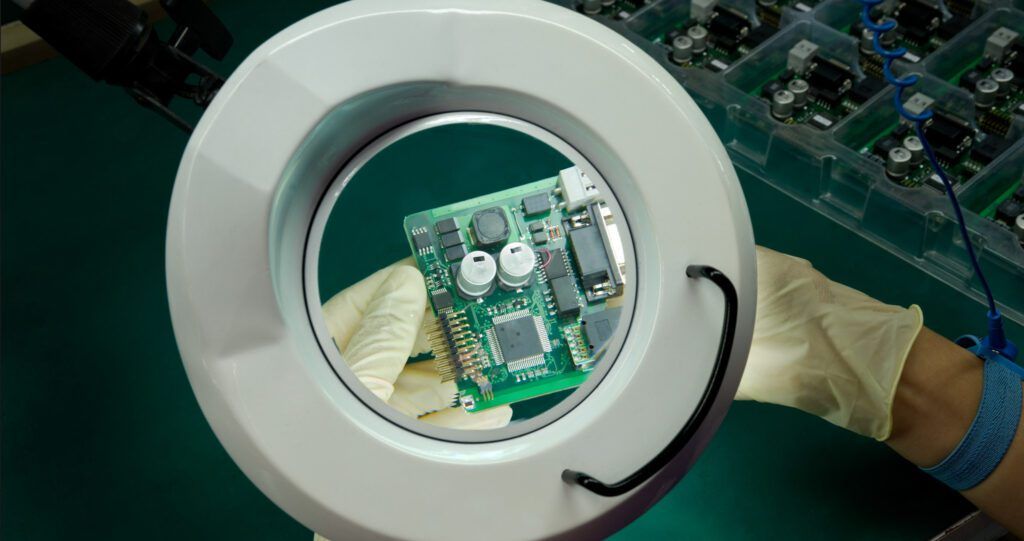Sometimes a little creative kickstart helps us to produce more interesting images. This can be especially so when we’ve been photographing the same subjects for a long period. In this guide, I aim to give you some fresh ideas about how you can get creative by shooting through objects and things. This technique can work well with just about any subject you choose to photograph.
Do you like to specialize and zero in on a few specific subjects? Or do you like to photograph a wide variety of subjects? Either way, this technique can help bring new life to your photographs.
Including elements in the foreground of your photos can help add depth to them. Photographing through transparent or semi-transparent objects can produce interesting effects. Diffusion of light and distortion of objects in the foreground often add some intrigue to a photograph. Some photographers even like to carry a lens ball, glass prism, or some other object. They make a habit of placing them in front of their lens whenever possible.
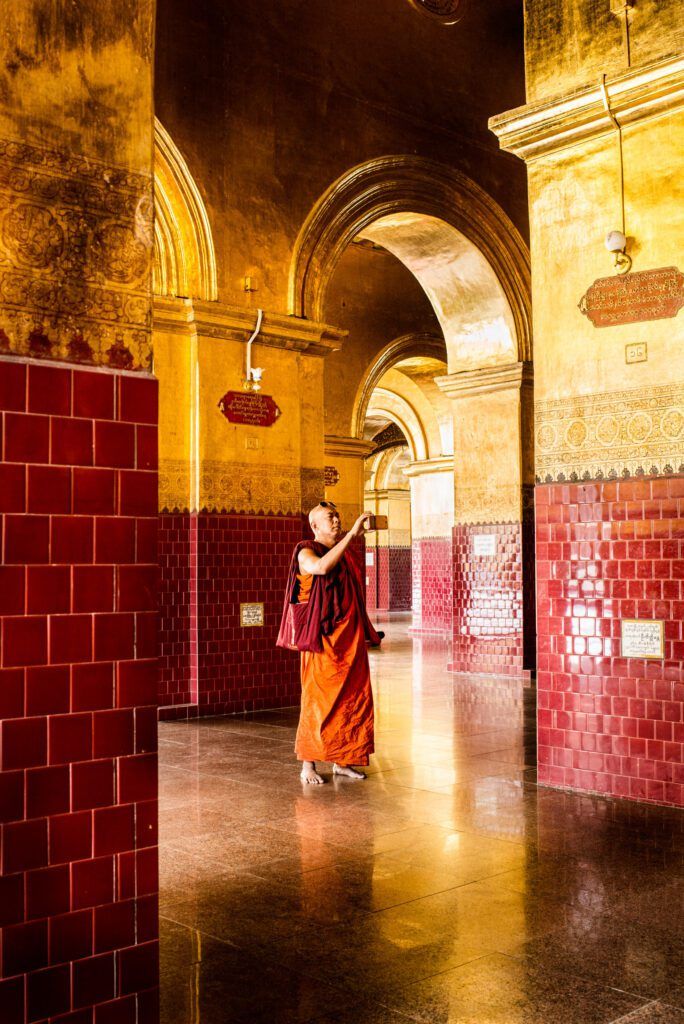
Photograph by Kevin Landwer-Johan
Key Lesson: Using objects in the foreground of your photos can help you create more interesting compositions. This technique adds depth, distortion, or more context to the images you make.
Recommended Reading: If you’d like to improve your composition skills for better images, grab a copy of Photzy’s best-selling premium guide, Understanding Composition.
Add a Sense of Depth to Photos by Looking Through Objects
When you have a deep depth of field and everything is in sharp focus, the effect will be minimal. Controlling the depth of field creates a more interesting composition. Frame your subject and manage your depth of field so what’s in the foreground is out of focus. This results in a greater sense of perspective in your photo.
This is often easier to do than blurring the background of a photo. One consistent factor of lenses is that more will be in focus behind what you focus on than in front of your subject. This is true for any focal length and an aperture setting you use. No matter how much of the object in the foreground you include in your composition, the viewer’s eye will be drawn to your subject because it’s in focus. The blurry foreground will add a sense of depth without being distracting.
You can be as creative as you like with what you use in the foreground to look through. It does not have to be a door or window.
Controlling the depth of field creates a more interesting composition. Frame your subject and manage your depth of field so what's in the foreground is out of focus.
We see the world in three dimensions, but our photographs are always two-dimensional. By framing a subject by looking through something that’s in the foreground, we can add more of a sense of dimension to our photographs.
Probably the most common things to look through at a subject are doors and windows. Photographers often use this framing technique to add interest to an image. But you can do more with a traditional frame than use it as a surround to your subject.
By including more rather than less of a doorway or window frame, you can add greater depth. The better you control the depth of field in this type of image, the more effectively you can convey the sense of distance.
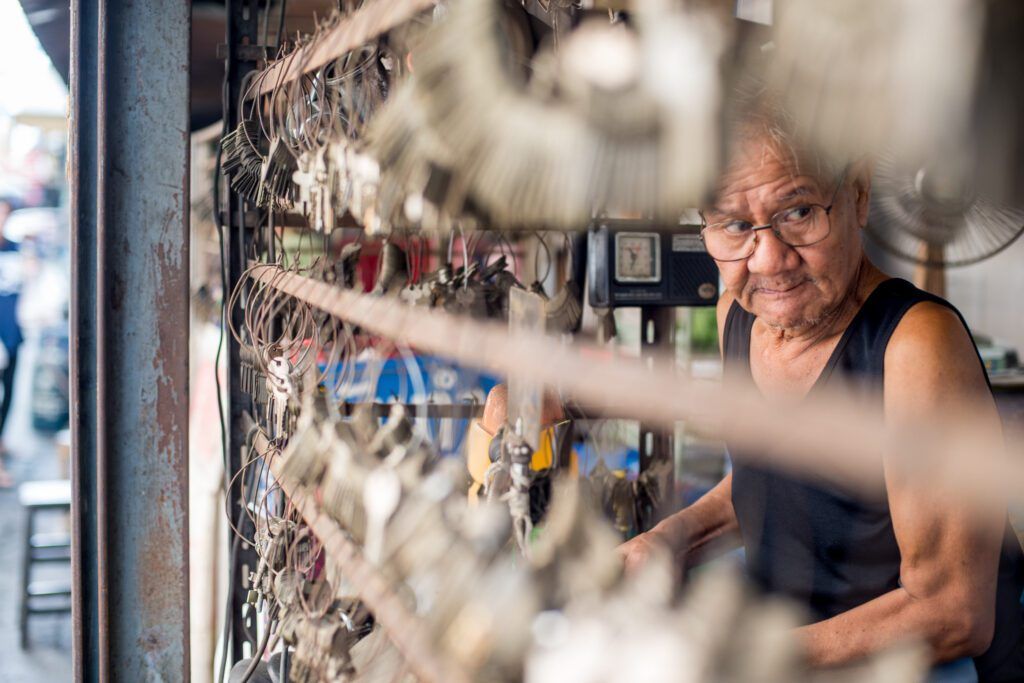
Photograph by Kevin Landwer-Johan
In the image above, I made use of the racks of keys hanging in front of the key maker in his shop to frame him. It’s hard to make out what’s in the foreground because it’s so blurred, but the effect of depth is clear.
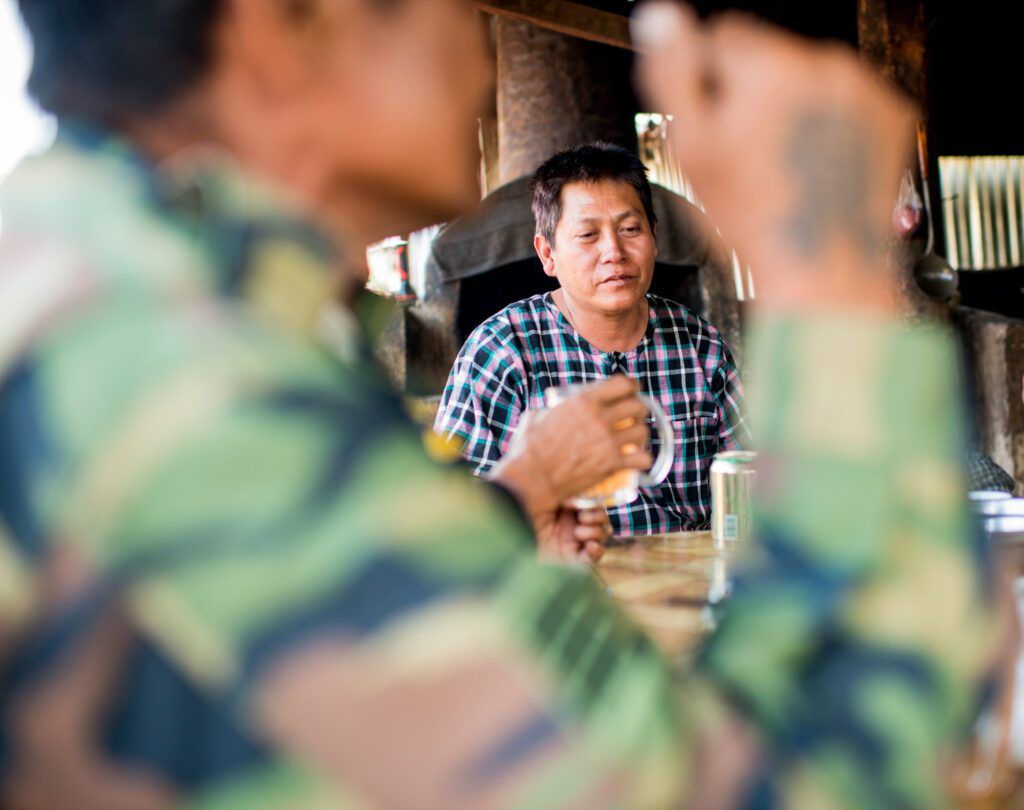
Photograph by Kevin Landwer-Johan
Looking through the shape of a man’s arm toward another man seated at the same table helps create a sense of depth. The other hand holding the drink also adds to the sense of depth because it’s not as out of focus as the man’s arm.
Key Lesson: By controlling the depth of field well, you can make the most of looking through objects. This will give a heightened perception of dimension in your photos.
Guide the Viewer’s Eye
Carefully including elements in the foreground of your composition can help guide the viewer’s eye to your main subject. This technique works well if a subject is surrounded by many other things. It can also be effective when the subject is somewhat isolated.
Looking through darker foreground objects produces an even more compelling way of guiding your viewers. Sometimes this can be achieved in-camera when you have control over the lighting. Most often, darkening a foreground object during post-processing produces a stronger effect. Therefore, many photographers like to add a vignette to their photos as it gives an illusion that we are looking through something.
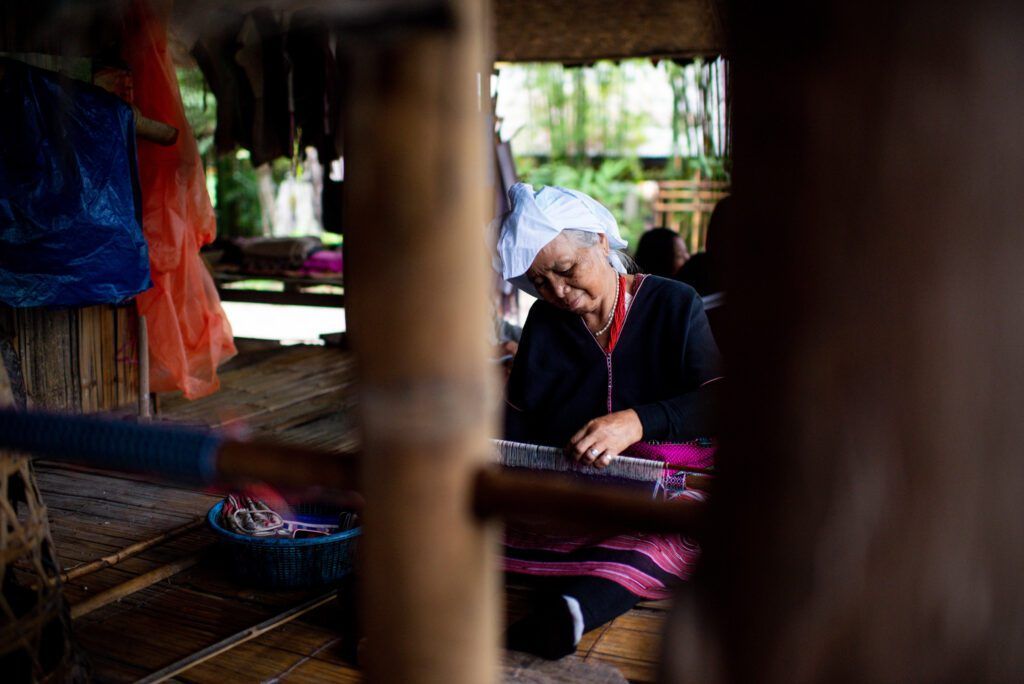
Photograph by Kevin Landwer-Johan
By looking through the posts of her house and the structure of her loom, I can help guide your eye to the Korean woman weaving. The shapes in the foreground were naturally a little darker and I enhanced this when I processed the photograph.
As I was taking this photo, she was aware that I was doing so. Including the elements in the foreground to look through adds a sense of separation from her, almost like I was spying on her. Photographers who work with longer lenses will take photos that include foreground elements in this manner. I took this photo with a 35mm lens, and it would have been easy to exclude the things in the foreground if I had wanted to.
Key Lesson: By using objects in the foreground, you can help frame your subject and guide the viewer’s eyes to it.
Hide the Clutter
Sometimes you’ll find yourself wanting to photograph a subject that’s surrounded by clutter. You have to make some choices. Do you include the clutter? Do you move everything out of the way so when you take your photos you cannot see it? Or can you hide the clutter by framing your subject with something that’s in the foreground? Shooting through objects in this manner can help you make stronger photos when you have one main subject you wish to concentrate on.
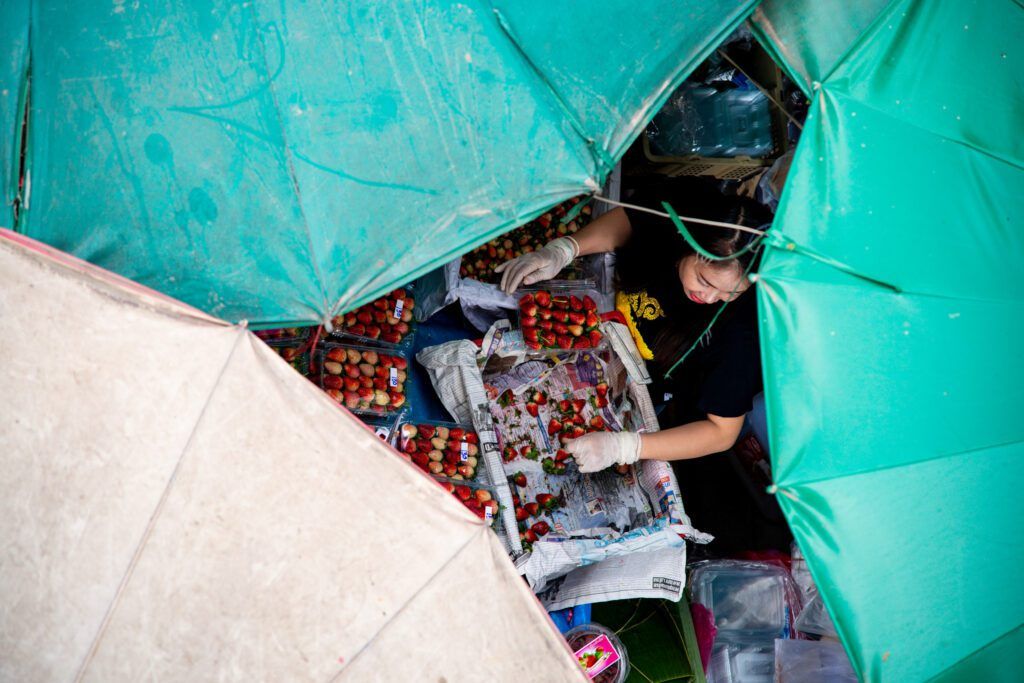
Photograph by Kevin Landwer-Johan
From a vantage point above the busy street market, I wanted to isolate people who were working below me. I was on a footbridge over the street so could move along until I could see only one person and what they were doing.
By looking through the large umbrellas at the woman packing strawberries, I was able to use them to block most of the clutter that surrounded her. If I’d been at ground level, I would not have been able to isolate her so well.
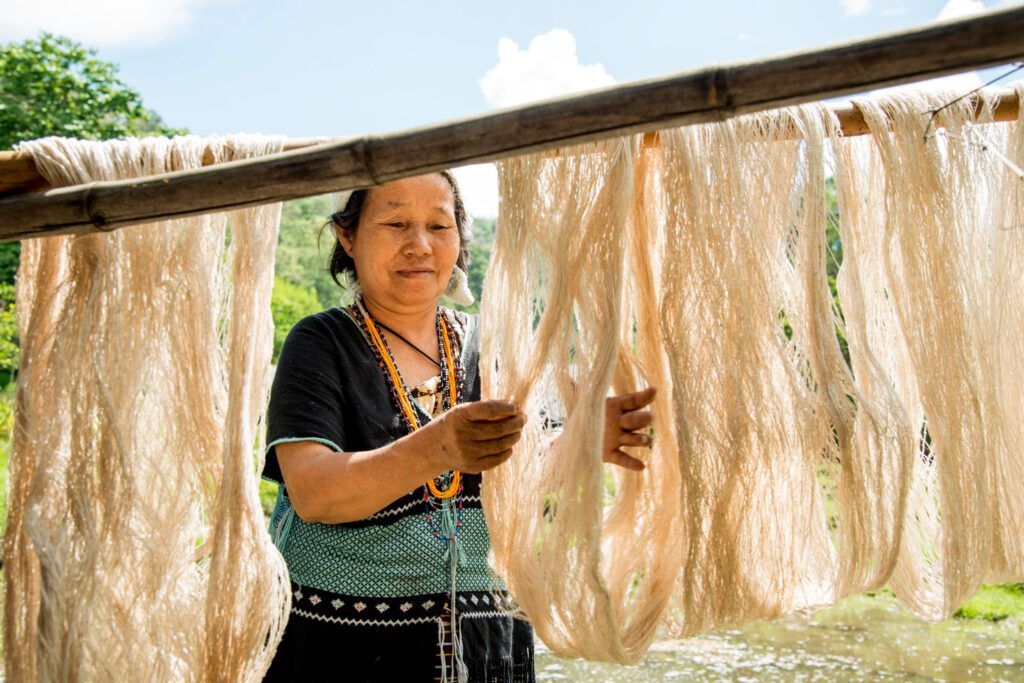
Photograph by Kevin Landwer-Johan
In this image of a Hmong woman hanging her skeins of hemp thread out to dry, I have used her product to hide the background. Had I moved further back from her and included what was behind her, the story aspect of this photo would not have been so strong. It would have included some location context, but for this photo, I was interested in showing what she was doing rather than where she was.
The skeins of yarn shield the background from view and frame her nicely.
Key Lesson: Making good use of foreground elements is a great way to hide distractions and help the viewer concentrate more on your main subject.
Recommended Reading: If you’d like to improve your composition skills for better images, grab a copy of Photzy’s best-selling premium guide, Understanding Composition.
Photographing Through Transparent and Semi-transparent Objects
Taking photos through glass, water, or other transparent objects can produce some stunning effects. Reflections and distortion can add an interesting dynamic to your photos.
The flat or curved glass reflects and refracts light in different ways. Photographing through windows, glasses, bottles, and other glass objects can produce some interesting distortions.
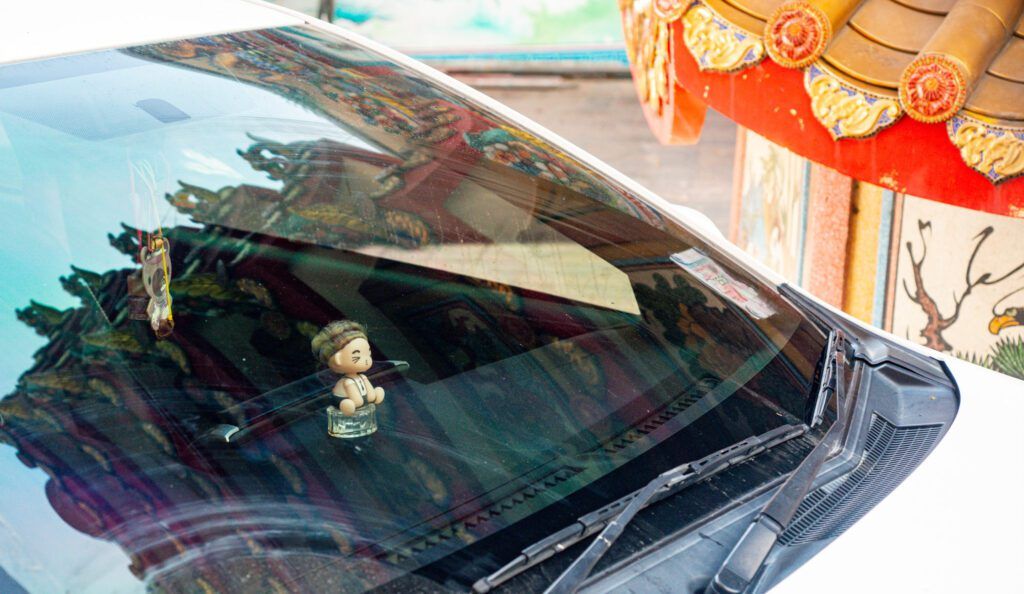
Photograph by Kevin Landwer-Johan
By photographing the dashboard ornament through this car windscreen, I’ve captured the structure of the temple reflected in the glass.
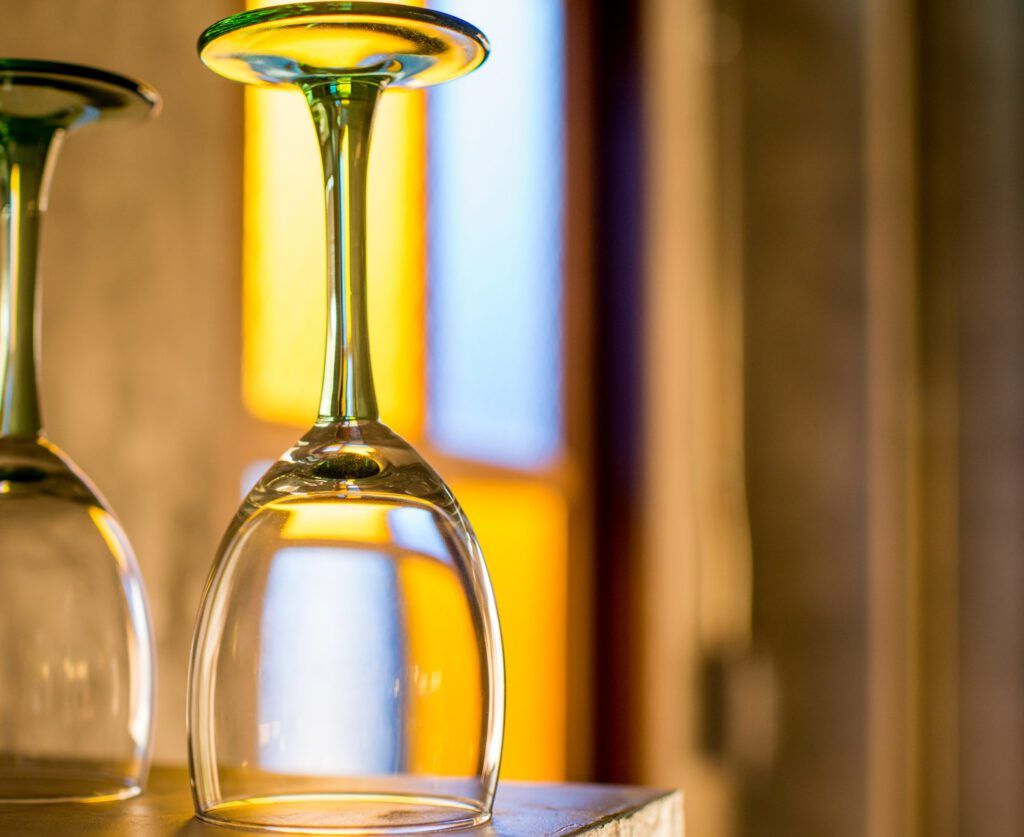
Photograph by Kevin Landwer-Johan
Light reflects off and refracts through this wine glass accentuating its shape and distorting the wall and windows behind it. Curved glass can deform what’s behind it in wonderful ways when we take photos through it. Experimenting with bottles and glasses while photographing other things is a lot of fun and can produce peculiar results.
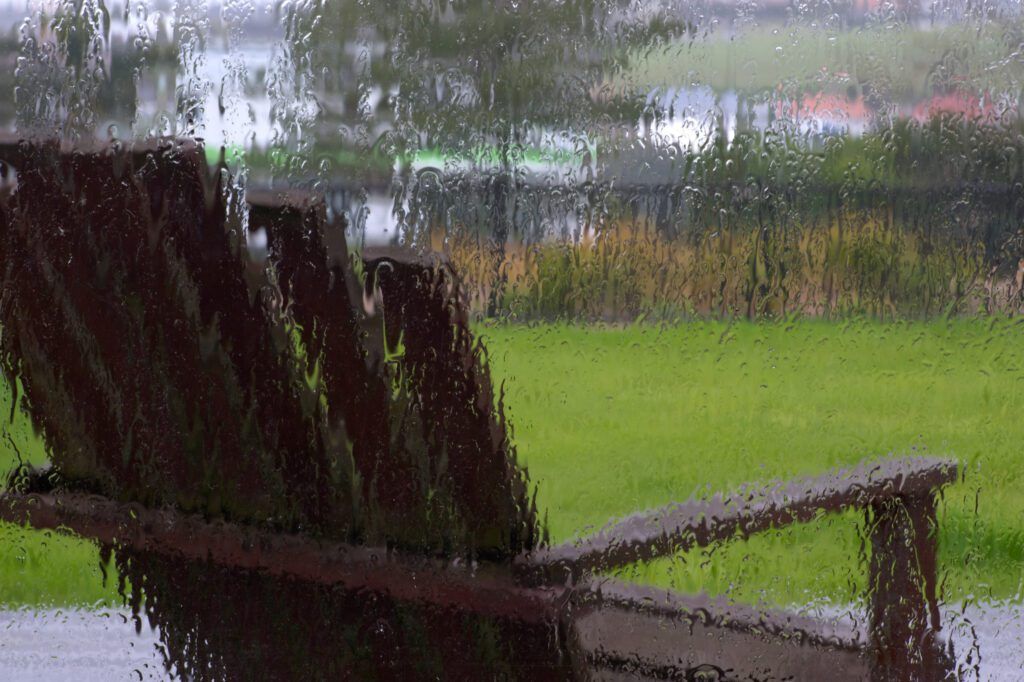
Photograph by Kevin Landwer-Johan
Flat window glass will not often distort what’s behind it unless it’s smeared with rain. For this composition, I took numerous photos as I experimented with focus and depth of field. This one I thought works best when I’ve focused on the glass and kept the chair just slightly out of focus. This shows the rain on the window and how it distorted the image of the chair most interestingly.
Key Lesson: Clear objects can provide wonderfully creative results when you photograph through them.
Adding Context by Photographing Through Objects
Sometimes you can compose images using what’s in the foreground to add context to your main subject.
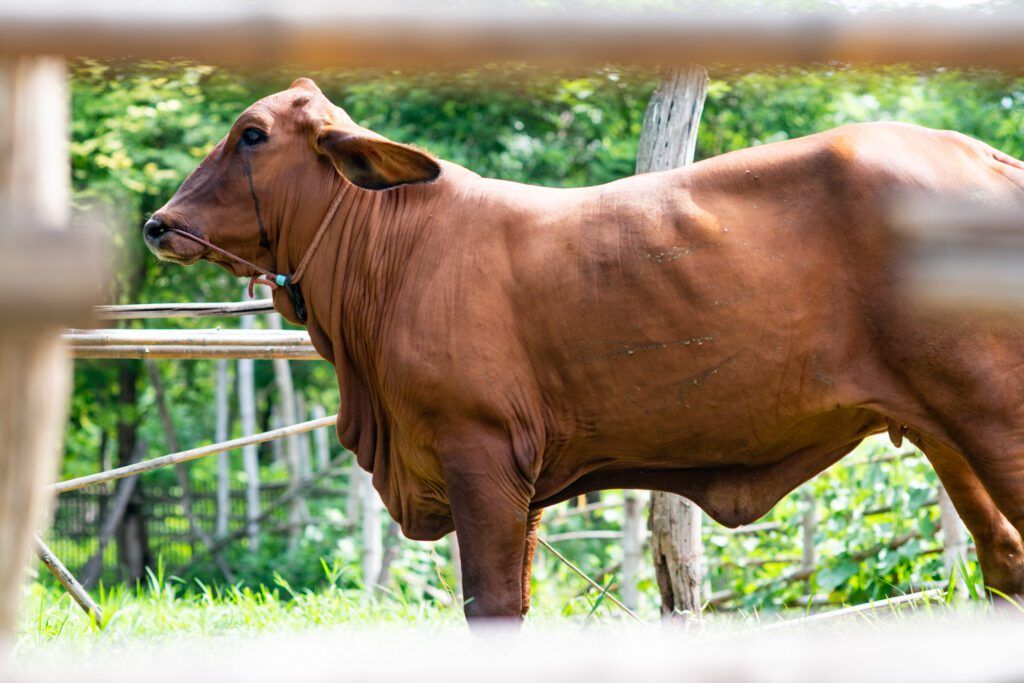
Photograph by Kevin Landwer-Johan
Using the fence railings to frame this cow provides the viewer with information about where the cow is. It’s at the sales yard and obviously not out enjoying freedom in a pasture.
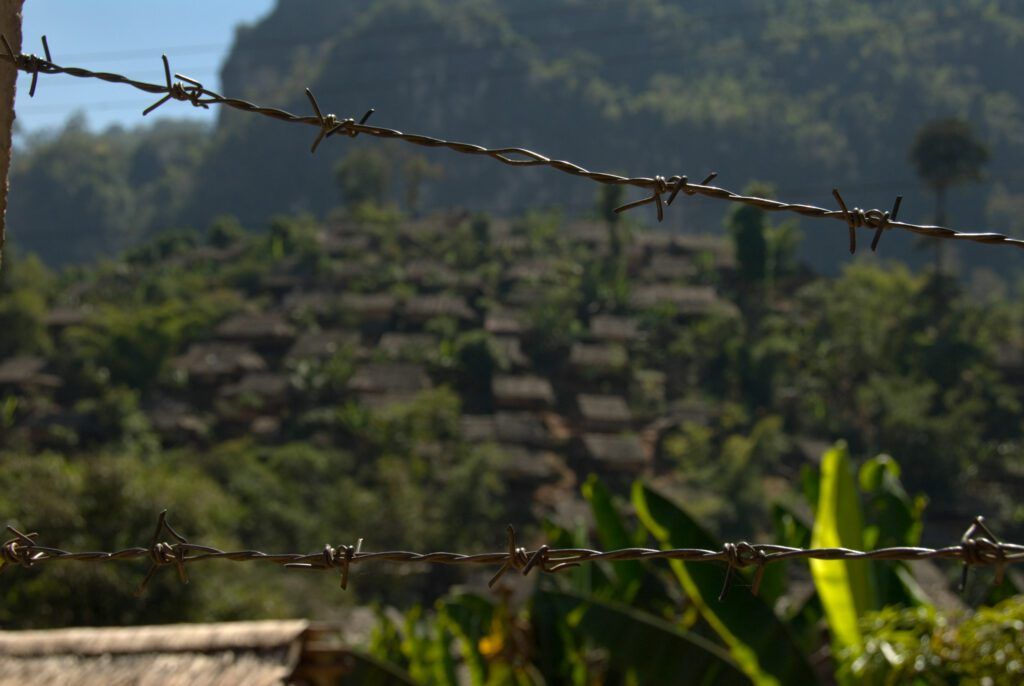
Photograph by Kevin Landwer-Johan
Including the barbed wire fence in this photo of a refugee camp adds to the story. It implies the lack of freedom for the people who live in the houses on the hillside behind the wire fence. Without the wire, this could easily be an image of any normal mountain village in Southeast Asia.
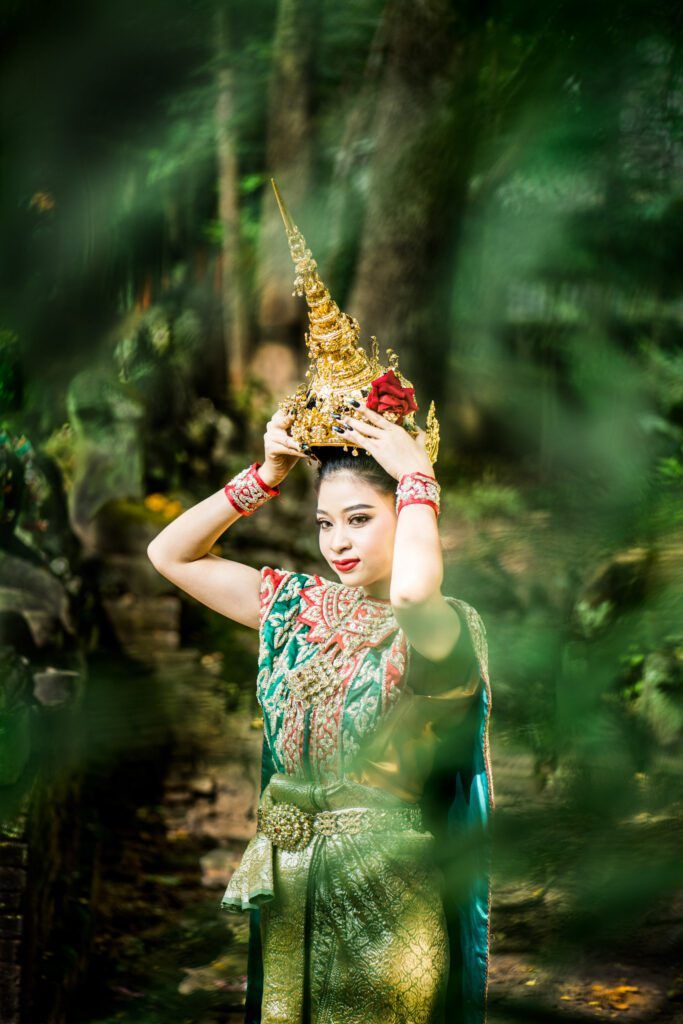
Photograph by Kevin Landwer-Johan
Key Lesson: When there’s something in the foreground that’s relevant to your main subject, you can photograph through it to add more context to your images.
Conclusion
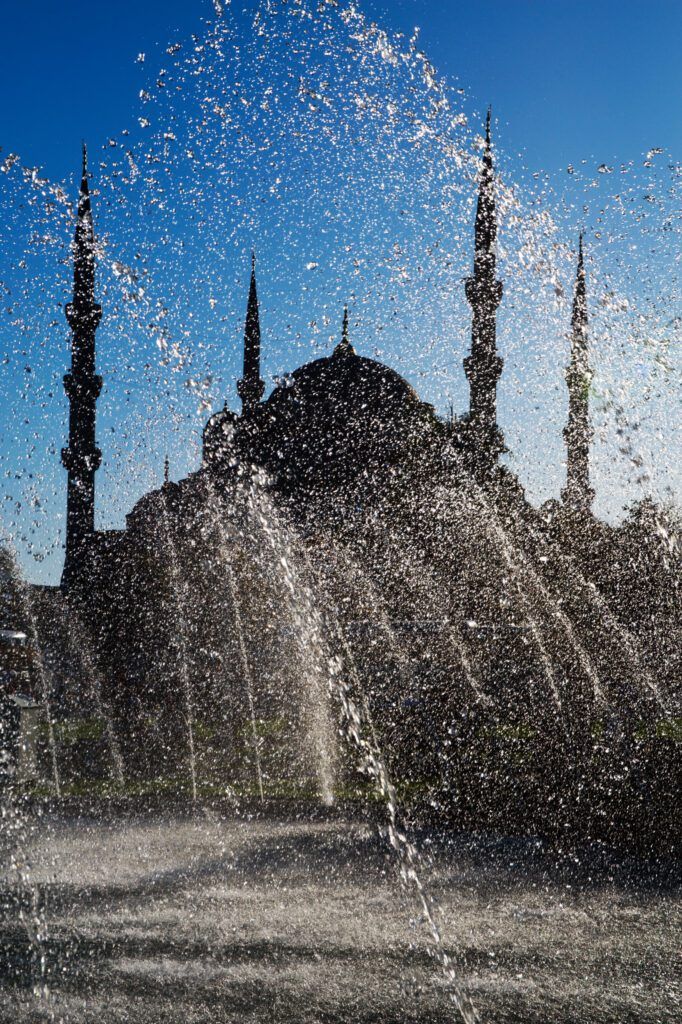
Photograph by Kevin Landwer-Johan
Creatively using objects to frame, distort, diffuse, or add context to your subject can make for more interesting photographs.
When you pick up your camera today to take photos, think about how you can use other elements in the foreground to look through. How can you enhance your compositions using this technique?
Creatively using objects to frame, distort, diffuse, or add context to your subject can make for more interesting photographs.
As with any photography composition technique, frequent practice will help you master them. When you first start, you may find it challenging. But the more you practice, you’ll begin to find that you naturally start to see when it’s best to look through something to help enhance your subject.
Recommended Reading: If you’d like to improve your composition skills for better images, grab a copy of Photzy’s best-selling premium guide, Understanding Composition.
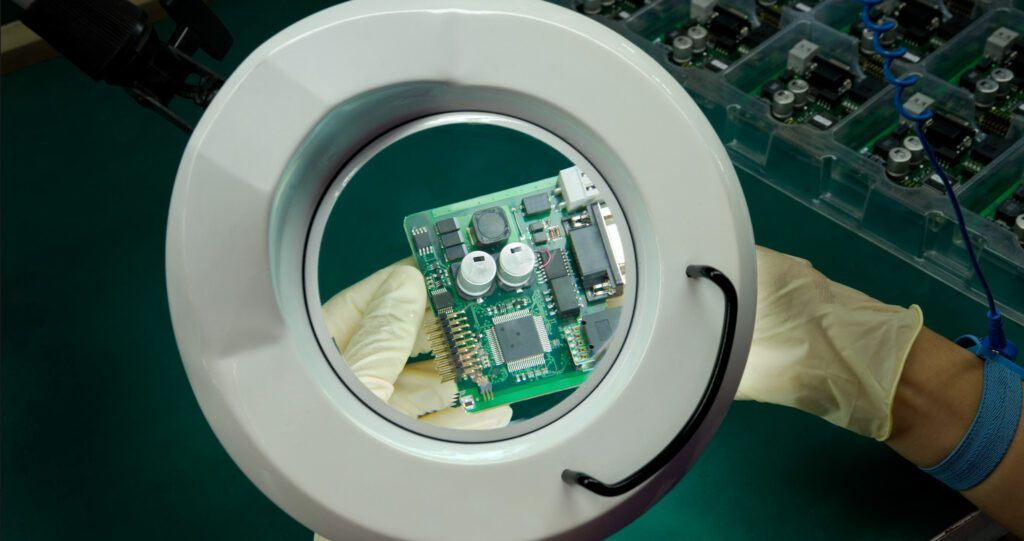
Photograph by Kevin Landwer-Johan
Self-Check Quiz:
- What types of subjects can you use this composition technique with?
- Can photographing through something increase or decrease the sense of depth in a photo?
- How does controlling the depth of field help to use this technique to make more creative photos?
- Why do darker foreground objects help guide a viewer’s eye to the main subject when the subject is lighter?
- What can happen to an image when you photograph it through glass?
- How can photographing through something help add context to a photograph?

